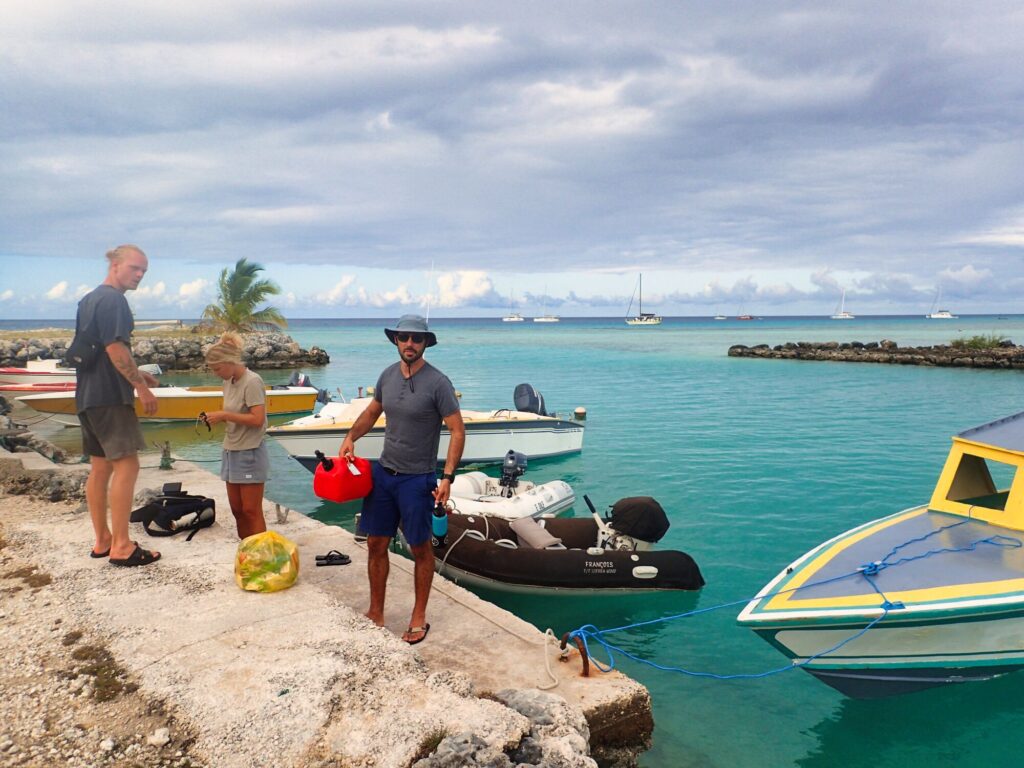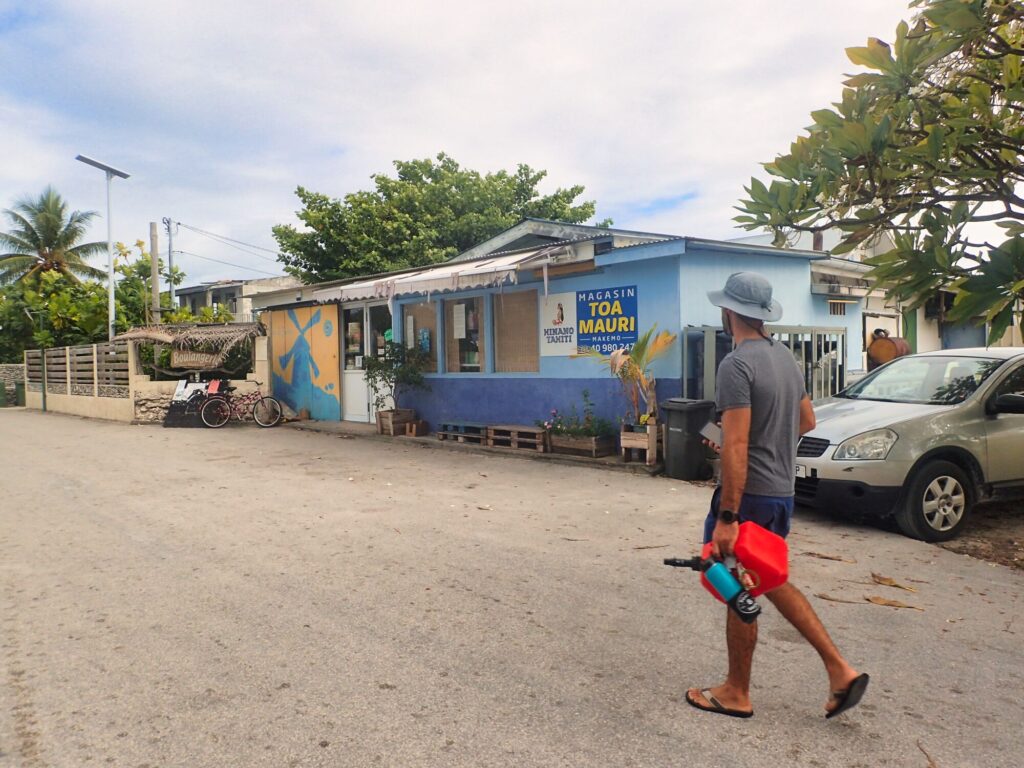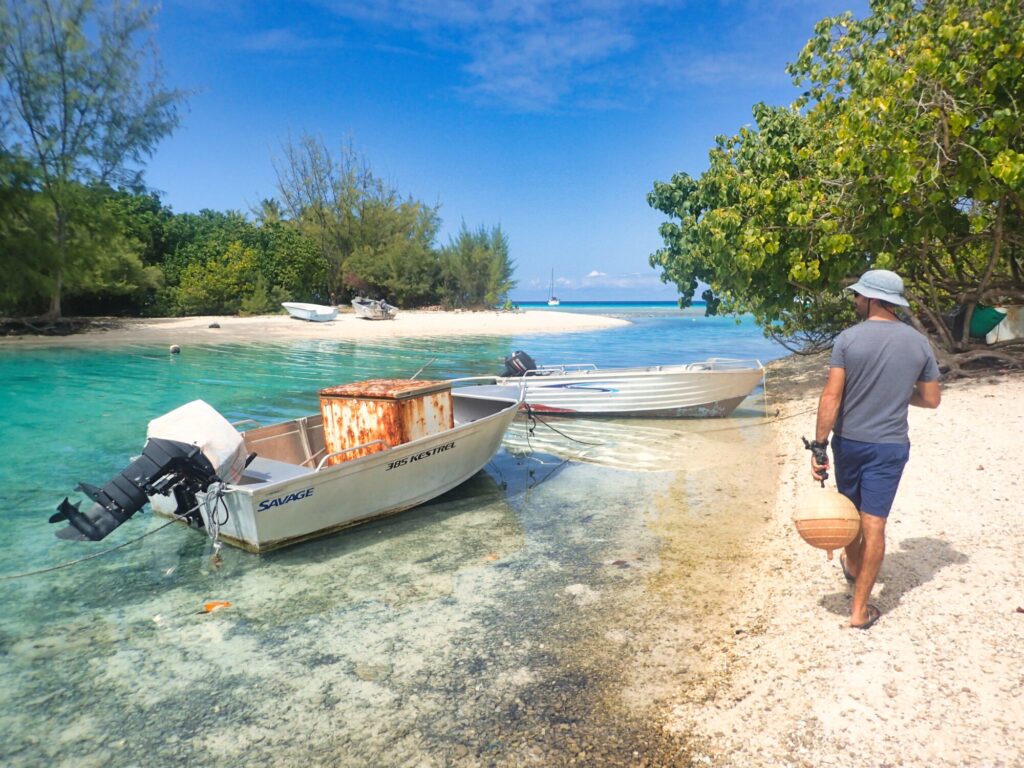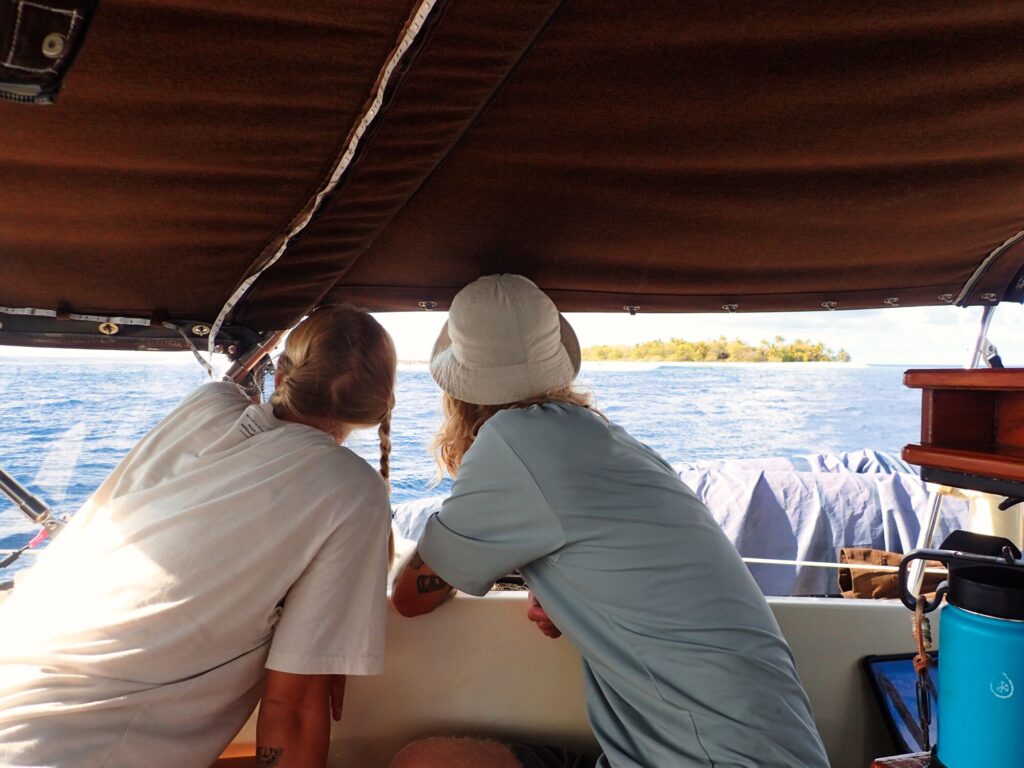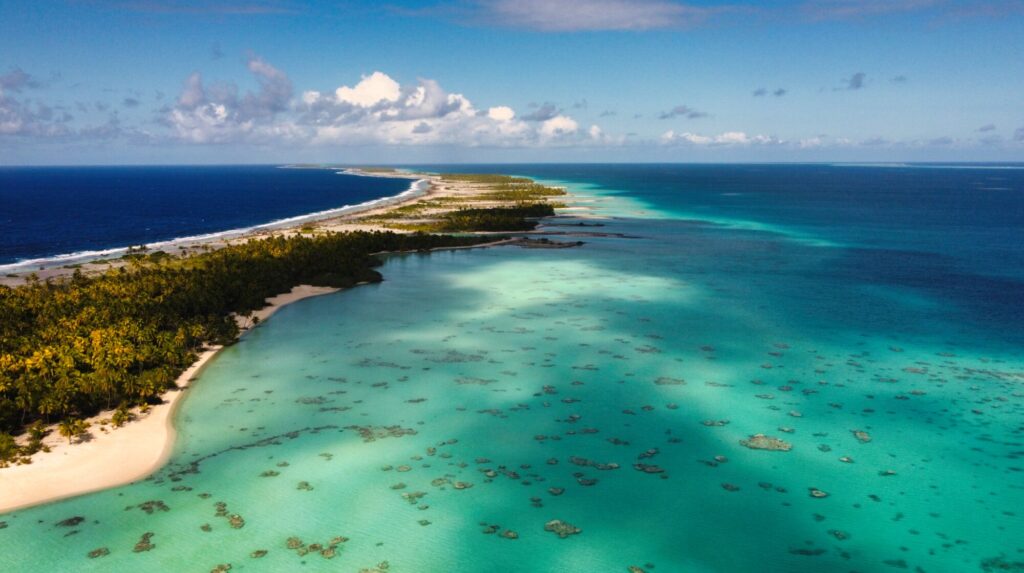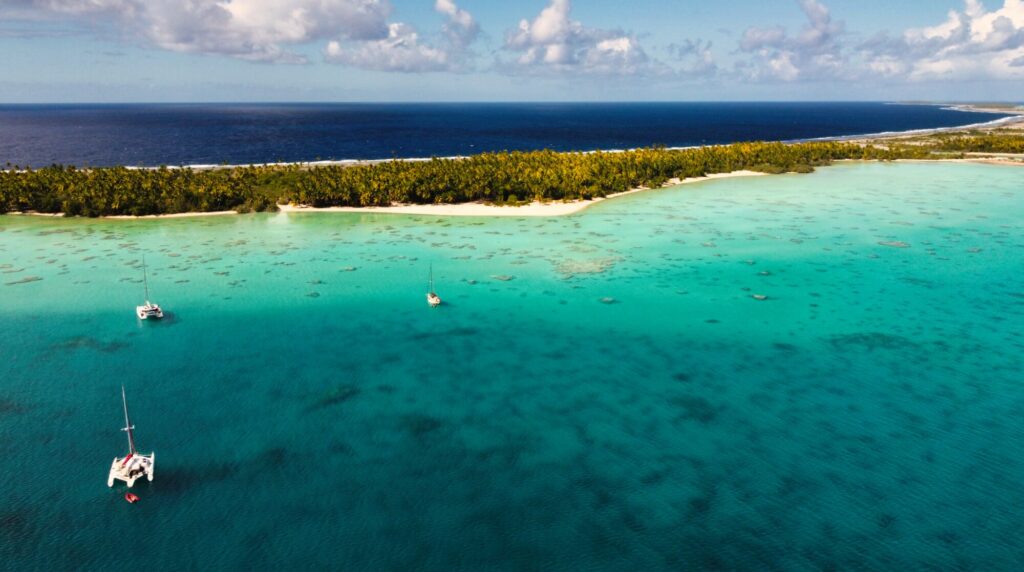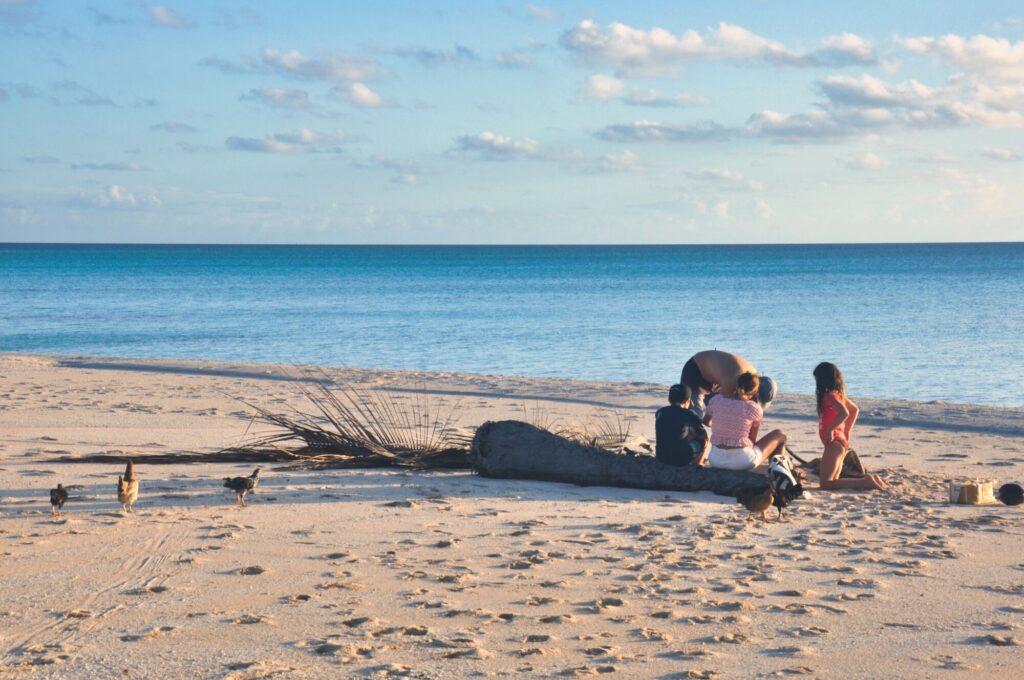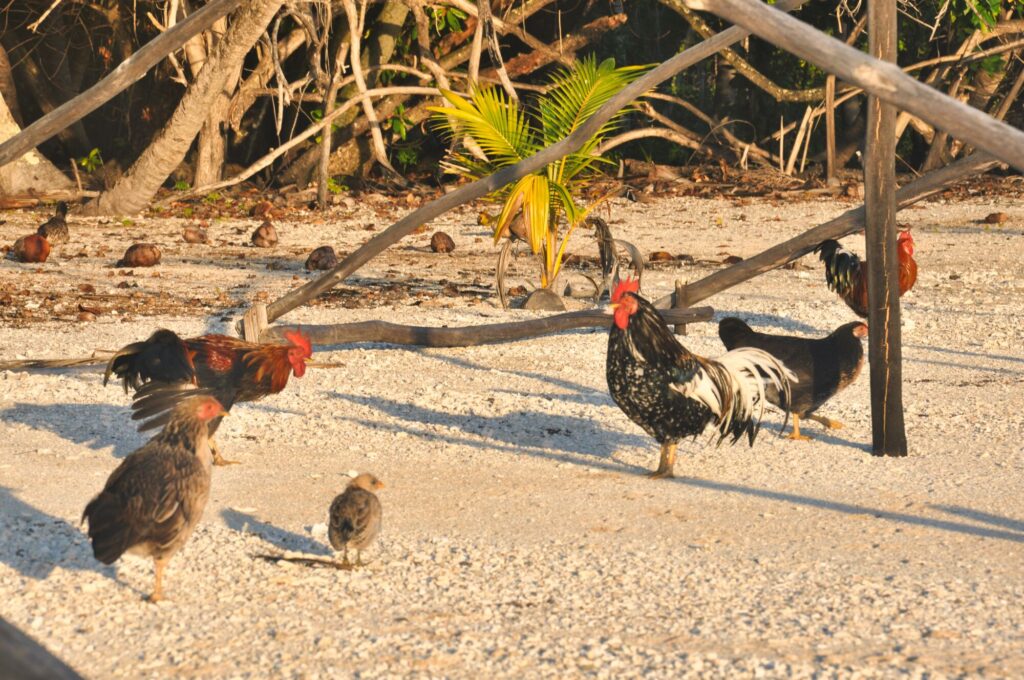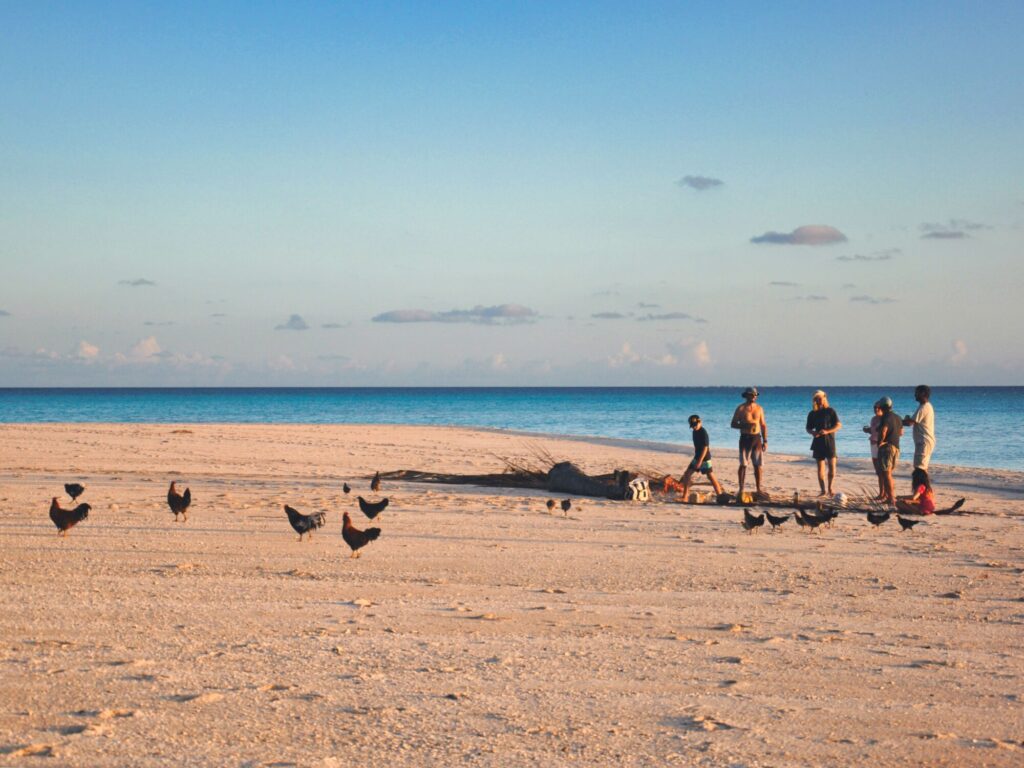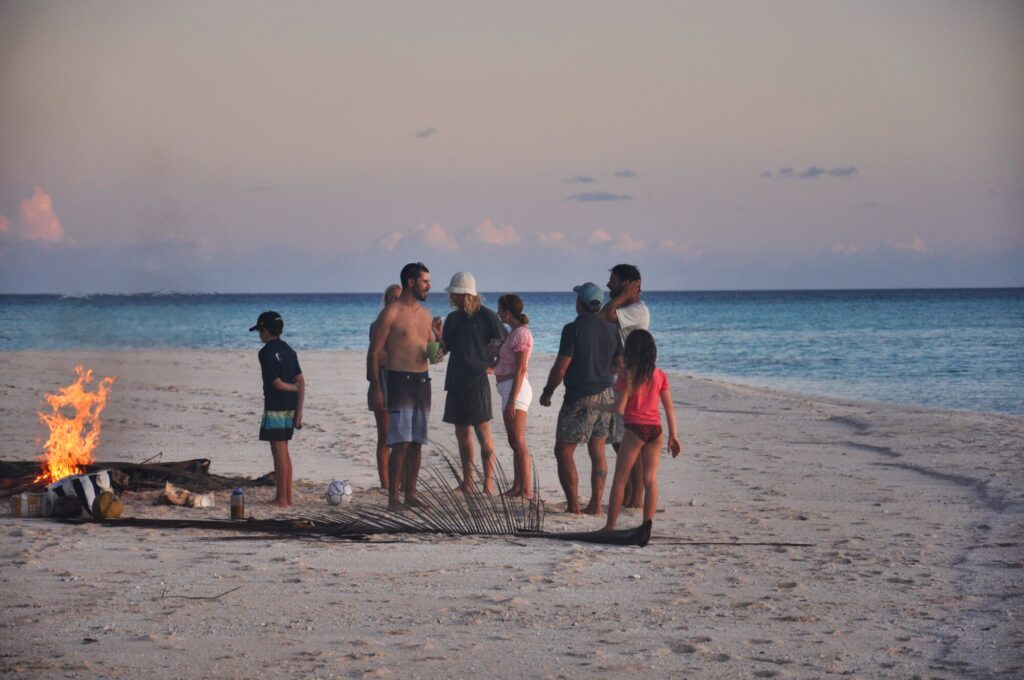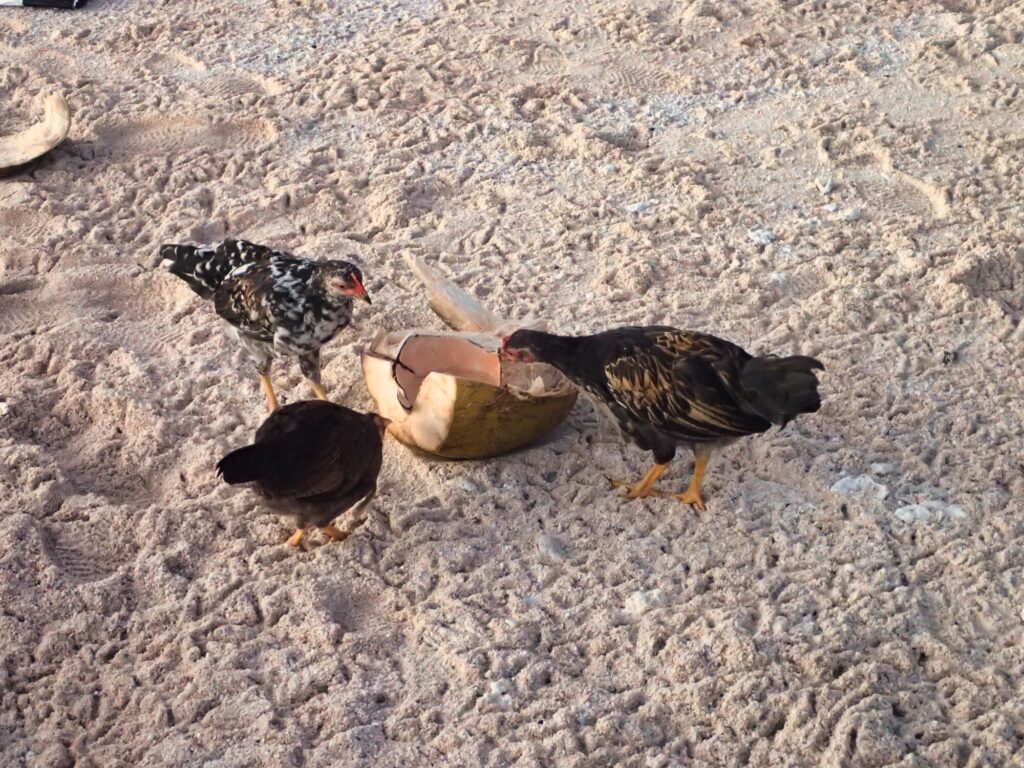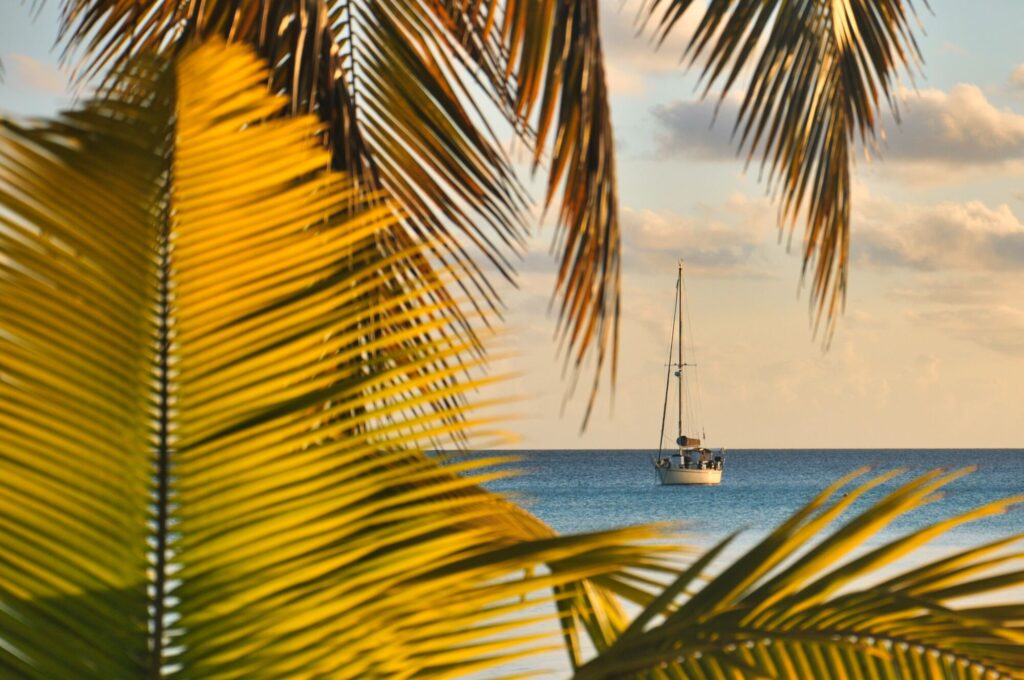After a great couple of days at our first atoll, Raroia, we were excited and ready to see more of the Tuamotu islands. It is critically important plan the pass entry and exit with the tide and resulting current. All departures and arrivals need to be carefully planned. There are only four slack tides (periods of little or no current in the channel when the water level inside the atoll is near the same as the ocean level outside) in a 24-hour period. Unless it’s very well charted, it is unsafe to enter and navigate around an atoll at night because of shallow coral patches. So, there are really only two times a day when you should enter/exit, which becomes challenging when planning your departure from one atoll and your arrival at the next.
Our next atoll would be Makemo. If we left Raroia during the morning slack tide it would be dark by the time we arrived at Makemo. So our best option was to leave Raroia during the afternoon slack, sail through the night and arrive at our destination during the morning slack at Makemo. If we can avoid it, we try not to sail at night, but this was a special situation. I took the 12AM shift and it was another lovely calm night of sailing. So far, sailing in the Tuamotus had been nothing but a dream!
We arrived at the pass in the morning and easily transited into the atoll, anchoring near the town. This was one of the only atolls that has 4g cell service and we spent the day glued to our phones. It’s funny how you can be in one of the most beautiful places imaginable and still be preoccupied with what other people are doing back home.
The following day we went into town to grab some provisions and fill up the gasoline jerry cans. As expected, the produce selection was quite sad so we picked up mostly canned items. I also had run out of floss, which seemed impossible to find here. The smiles from the friendly locals revealed that dental hygiene wasn’t much of a priority so it wasn’t a surprise that floss was nowhere to be found. We did manage to find a store willing to sell us gasoline but only in 10-liter increments. Since the fuel is stored in barrels, Eitan needed to use a hose to syphon 8 liters into our 2-gallon jerrycan while I chugged a 2-liter bottle of water to store the remaining gas. Unfortunately, Eitan ended up getting a mouthful of gasoline and complained his breath smelled like gas fumes for the next few days.
We moved halfway up the atoll to a different anchorage, dropped the hook between a couple of other boats and coordinated a beach bonfire around sunset. Nice sandy beaches were surprisingly harder to find than expected since most beaches were made up of chunks of dead coral. This beach looked nice and sandy with a thick forest of palm trees behind it. We took our dinghy to shore a little early, mostly because I wanted to practice taking some pictures. After seeing Simone’s pictures of the Marquesas, I had begun using Eitan’s older Nikon DSLR camera to learn a little more about photography. I understood the whole exposure triangle of ISO, shutter speed, and aperture, but struggled to take any pictures better than my iPhone could. I figured some practice couldn’t hurt, so I walked around for a while as Eitan began collecting old palm fronds and sticks for the fire.
As we congregated on the beach with the three other boats and got the bonfire going, chickens began emerging from the palm tree forest behind the beach. It was a funny scene since you normally don’t associate chickens with a tropical paradise but I assumed they are a food source for the fisherman who inhabits the abandoned structures on the beach from time to time. Conversely, they seemed to be looking toward us to supply them with food. We only had coconuts so we broke one open and I filled up a half with some water which became their new watering hole.
On our last day in Makemo, we decided to try snorkeling the northern pass and made the two-hour trip to get there. When we arrived, we realized the area we had planned to anchor at had no protection from the prevailing winds and where we ended up anchoring wasn’t close enough to the pass to swim over and snorkel it. In hindsight, we should have just stayed put and enjoyed the lovely beach, but it’s hard to stay anywhere for long when our visas were running out day by day. The day was a bit of a bust but we did end up finding our last pearl buoy needed to properly float the chain.
